Related Research Articles
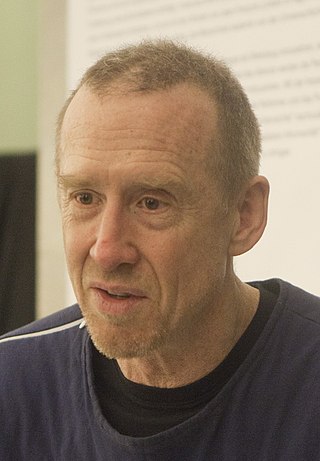
William Forsythe is an American dancer and choreographer formerly resident in Frankfurt am Main, Germany, and now based in Vermont. He is known for his work with the Ballet Frankfurt (1984–2004) and The Forsythe Company (2005–2015). Recognized for the integration of ballet and visual arts, which displayed both abstraction and forceful theatricality, his vision of choreography as an organizational practice has inspired him to produce numerous installations, films, and web-based knowledge creation, incorporating the spoken word and experimental music.
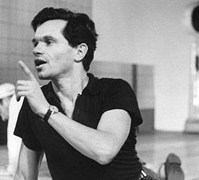
Michael Kidd was an American film and stage choreographer, dancer and actor, whose career spanned five decades, and who staged some of the leading Broadway and film musicals of the 1940s and 1950s. Kidd, strongly influenced by Charlie Chaplin and Léonide Massine, was an innovator in what came to be known as the "integrated musical", in which dance movements are integral to the plot.
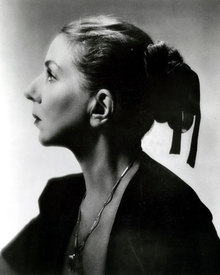
Hanya Holm is known as one of the "Big Four" founders of American modern dance. She was a dancer, choreographer, and above all, a dance educator.
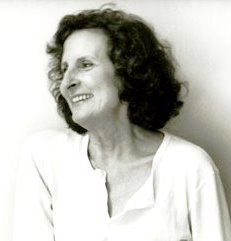
Trisha Brown was an American choreographer and dancer, and one of the founders of the Judson Dance Theater and the postmodern dance movement. Brown’s dance/movement method, with which she and her dancers train their bodies, remains pervasively impactful within international postmodern dance.

Bill Cratty was an American modern dancer and choreographer.

Jack Cole was an American dancer, choreographer, and theatre director known as "the Father of Theatrical Jazz Dance" for his role in codifying African-American jazz dance styles, as influenced by the dance traditions of other cultures, for Broadway and Hollywood. Asked to describe his style he described it as "urban folk dance".
Rosalind Newman is veteran choreographer who has created a body of over 70 works.
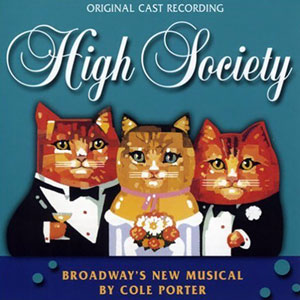
High Society is a musical comedy with a book by Arthur Kopit and music and lyrics by Cole Porter. Some updated or new lyrics were provided by Susan Birkenhead. The musical is based on Philip Barry's 1939 stage comedy The Philadelphia Story and the subsequent 1956 musical film adaptation, High Society, which features Porter's songs. The musical includes most of the music featured in the movie, along with several songs selected from other Porter musicals. It premiered on Broadway in 1998 and has since been revived. Another musical adaptation of the story had opened in London in 1987 with a different book by Richard Eyre.
Deborah Hay is an American choreographer, dancer, dance theorist, and author working in the field of experimental postmodern dance. She is one of the original founders of the Judson Dance Theater. Hay's signature slow and minimal dance style was informed by a trip to Japan while touring with Merce Cunningham's company in 1964. In Japan she encountered Noh theatre and soon incorporated nô's extreme slowness, minimalism and suspension into her post-Cunningham choreography. Sometimes she also imposed stressful conditions on the dancers, as with her "Solo" group dance that was presentation at 9 Evenings: Theatre and Engineering.
Kate Weare is an American choreographer. She is the founder and artistic director of the Kate Weare Company.
Margaret Jenkins is a postmodern choreographer based in San Francisco, California. She was a Guggenheim Fellow in 1980 and in 2003, San Francisco mayor, Willie Brown, declared April 24 to be Margaret Jenkins Day.

Modern dance is a broad genre of western concert or theatrical dance which includes dance styles such as ballet, folk, ethnic, religious, and social dancing; and primarily arose out of Europe and the United States in the late 19th and early 20th centuries. It was considered to have been developed as a rejection of, or rebellion against, classical ballet, and also a way to express social concerns like socioeconomic and cultural factors.
The physically integrated dance movement is part of the disability culture movement, which recognizes and celebrates the first-person experience of disability, not as a medical model construct but as a social phenomenon, through artistic, literary, and other creative means.
Annie-B Parson is an American choreographer, dancer, and director based in Brooklyn, New York. Parson is notable for her work in dance/theater, post-modern dance, and art pop music. Parson is the artistic director of Brooklyn's Big Dance Theater, which she founded with Molly Hickok and her husband, Paul Lazar. She is also well known for her collaborations with Mikhail Baryshnikov, David Byrne, David Bowie, St. Vincent, Laurie Anderson, Jonathan Demme, Ivo van Hove, Sarah Ruhl, Lucas Hnath, Wendy Whelan, David Lang, Esperanza Spalding, Mark Dion, Salt ‘n Pepa, Nico Muhly, and the Martha Graham Dance Co.
Sally Gross was an American postmodernist dancer.
Sarah Michelson is a British choreographer and dancer who lives and works in New York City, New York. Her work is characterized by demanding physicality and repetition, rigorous formal structures, and inventive lighting and sound design. She was one of two choreographers whose work was included in the 2012 Whitney Biennial, the first time dance was presented as part of the bi-annual exhibition. Her work has also been staged at The Walker Art Center, Jacob’s Pillow Dance Festival, The Kitchen, and the White Oak Dance Project. She received New York Dance and Performance awards for Group Experience (2002), Shadowmann Parts One and Two (2003), and Dogs (2008). She has served as associate director of The Center for Movement Research and associate curator of dance at The Kitchen. Currently choreographer in residence at Bard's Fisher Center, she is the recipient of their four-year fellowship to develop a commissioned work with Bard students and professional dancers.
Joya Powell, also known as Joya Powell-Goldstein, is a Bessie Award-winning choreographer, educator, and activist. As the founding artistic director of Movement of the People Dance Company, she is known for creating politically scorching dance-theatre that confronts issues of race and justice.
Madeline Hollander is an American artist, choreographer, and dancer, living and working in New York City. Her work explores the evolution of human body movement and the intersection between choreography and visual art.
Anna Doneva is a Bulgarian choreographer and contemporary dance teacher.:
Kathryn Karipides is a choreographer, modern dancer, and professor who developed and later co-directed Case Western Reserve University's dance program. Karipides worked for ten years as choreographer and principal dancer for the Dance Theatre of Kathryn Karipides and Henry Kurth. She is a proponent of modern dance and believes in expressing "anatomical truths" through choreography and movement.
References
- 1 2 3 4 5 6 Crowe. "Information Courtesy of Claire Porter" (Interview).
- 1 2 3 4 5 6 7 8 9 10 Biography Archived 2011-07-08 at the Wayback Machine , Claire Porter / Portables. Accessed June 6, 2013.
- ↑ Fleming, John. "Saying it with flowers Series: DANCE PREVIEW" [ permanent dead link ], Tampa Bay Times , June 19, 1992. Accessed June 6, 2013. "'I'm bringing the costumes, and the props are going to be found there,' Porter says, speaking from her home in Teaneck, N.J."
- 1 2 3 4 Anderson, Jack (1987-05-24). "Critics' Choice; Dance". The New York Times. pp. 2A. Retrieved 2009-04-16.
- 1 2 3 Kourlas, Gia (2007-02-24). "Trifles That Aren't, but Feel a Lot Like Improv Sketches". The New York Times. Retrieved 2009-04-23.
- 1 2 Anderson, Jack (1990-05-27). "Dance View; Appreciating the Choreographer's Palette". The New York Times. Retrieved 2009-04-23.
- 1 2 Anderson, Jack (1983-07-21). "Dance: Festival Presents Young Choreographers". The New York Times. Retrieved 2009-04-23.
- ↑ Dunning, Jennifer (1986-11-28). "DANCE: 'FRESH TRACKS' OF NEW CHOREOGRAPHERS". The New York Times. Retrieved 2009-04-23.
- 1 2 Dunning, Jennifer (1991-12-09). "Dance in Review". The New York Times. Retrieved 2009-04-23.